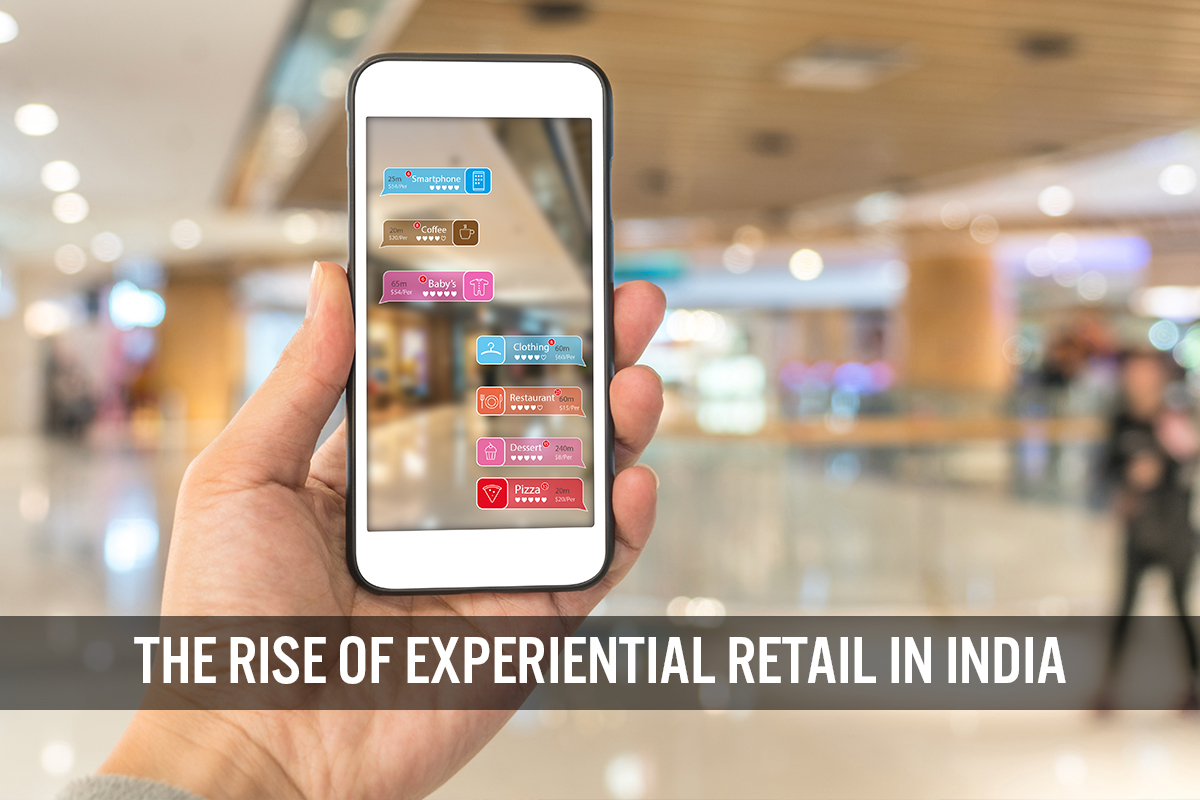
DIpil Das
Introduction
What’s the Story? More than ever, retailers must provide value to customers in their brick-and-mortar stores, to drive traffic and revenue. This is particularly relevant given the migration to e-commerce and erosion of store traffic that resulted from the Covid-19 pandemic. Coresight Research believes that physical retail renewal is a key retail trend to watch globally, with our BEST framework for physical retail emphasizing the importance of experiential retail—a marketing strategy where brick-and-mortar stores leverage technologies, in-store events, services and store associates to provide memorable experiences to customers—and differentiated services, among other things (look out for our upcoming report renewing this framework). We believe that retailers need to reposition themselves to offer experiential retail, as many shoppers are still attracted to the offline channel for the experience factor—stimulating the senses, getting help from store associates and getting products instantly. In this report, we look at the rise of experiential retail in India, how it differs from traditional retail, why retailers should invest in experiential retail and how they can do so. We also provide notable examples of recent experiential retail launches in India. Why It Matters Technology has forever changed the way consumers shop, and the online channel has particularly gained prominence in recent times—even in India, which has a low e-commerce penetration rate compared to other global markets. However, many retailers believe that physical stores still carry value in the modern retail landscape: they are not just storehouses for inventory but provide a space to offer immersive, engaging experiences that convey a brand’s identity and story. In fact, 60% of retailers in the Asia-Pacific region believe that brick-and-mortar stores are essential to customer engagement, according to real estate consulting firm CBRE’s October 2021 Retail Flash survey (see Figure 1).Figure 1. Asia-Pacific Retailers: Proportion That Agree with Statements About the Evolving Role of Physical Stores (% of Respondents) [caption id="attachment_148103" align="aligncenter" width="701"]
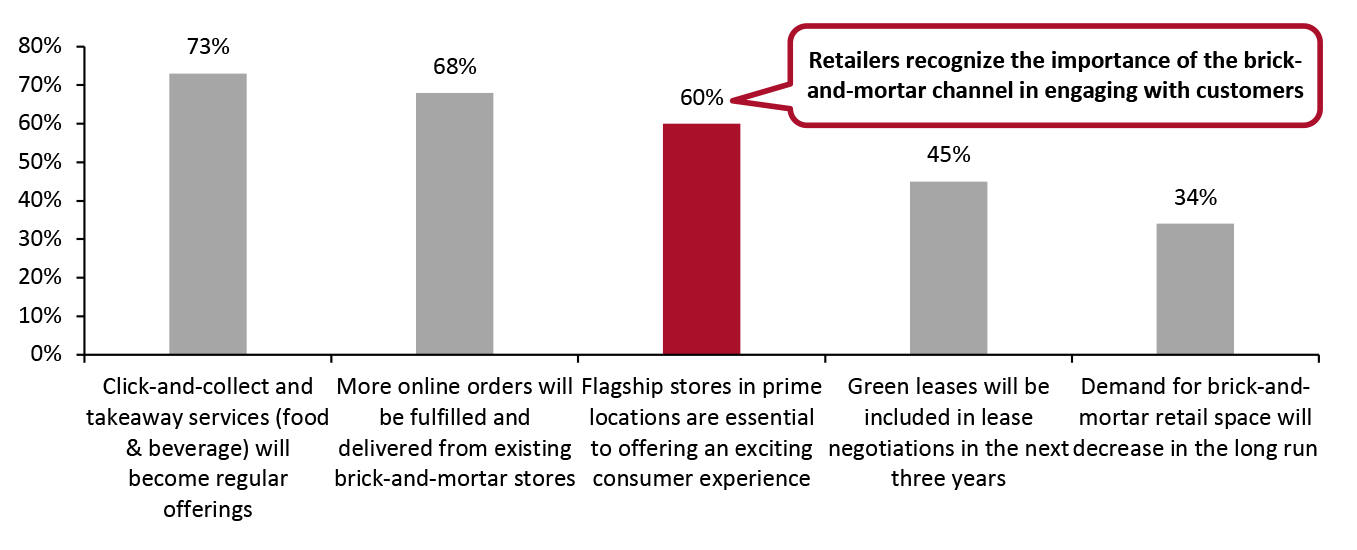 Base: 155 retailers across 10 countries in the Asia-Pacific region (including Australia, China, India, Japan, Singapore, Taiwan, Thailand and Vietnam, among other countries)
Base: 155 retailers across 10 countries in the Asia-Pacific region (including Australia, China, India, Japan, Singapore, Taiwan, Thailand and Vietnam, among other countries) Source: CBRE [/caption] Experiential retail also allows brands to engage with their customers in a personalized manner, address their needs and expectations, and better understand and influence their shopping behavior. Creating a memorable experience makes the customer happy, increasing brands’ customer retention and word-of-mouth publicity.
The Rise of Experiential Retail in India: Coresight Research Analysis
With today’s consumers looking for something more than traditional, transactional retail, brands and retailers can improve customer satisfaction and loyalty by offering engaging in-store experiences—such as by launching interactive spaces, using emerging technologies and providing exciting in-store services. In India, brands and retailers started offering in-store experiences even before the pandemic began:- Premium lifestyle brand Van Heusen launched a digitally immersive flagship store, Van Heusen Style Studio, in Bangaluru in 2018, focused on solving customer issues around fit and fashion. Upon entering the store, customers can use the “Style Bar,” a digital display that helps them find their style personality with a few simple questions and then displays options that match their answers. The store also features a “Fit Scanner,” which uses infrared to scan customers and identify the right fit for the clothing they selected. Finally, customers can virtually try on items using the “Virtual Trial Mirror,” replacing the need for changing rooms.
- Indian ethnic-wear retailer Fabindia opened an experience center in Delhi in 2019. The center offers value-added services—such as a Fabcafé (where customers can order food), an interior design studio, an organic wellness store, an apparel alteration studio and a kids’ zone—to provide a superior experience to customers.
- German sportswear and footwear retailer Puma India’s experiential stores in Hyderabad and Delhi offer digitally connected experiences, like the “PUMA x YOU” customization studio. The studio, available at both locations, allows consumers to customize and personalize Puma footwear, apparel and accessories using embroidery and print. The stores also each feature an interactive touchscreen that enables consumers to search products, styles, colors and sizes, as well as facilitate home delivery. Outside, Puma India’s stores feature elevated layouts and illuminated display walls showcasing products and promotional materials that catch customers’ attention, stick in their minds and provide them with something to talk about/post pictures of on social media.
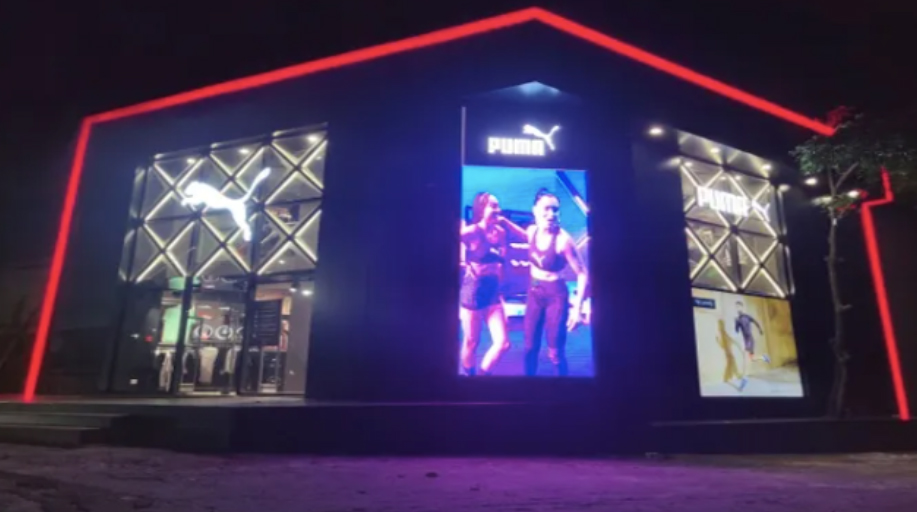 Illuminated display wall at Puma’s experiential store in Hyderabad
Illuminated display wall at Puma’s experiential store in Hyderabad Source: Indiaretailing [/caption] Sense Stimulation and Relationship Building Unlike traditional brick-and-mortar stores, experiential stores provide an immersive journey from the moment the customer enters the store, stimulating their senses. Rather than being purely centered on transactions, the focus is on building a relationship through experience.
- Direct-to-consumer (DTC) beauty brand MyGlamm’s 3,000-square-foot flagship store in Mumbai features a “Secret Lab” that allows loyalty program members to test digitally crowd-sourced formulations physically and provide feedback for product co-creation.
 MyGlamm flagship store in Mumbai (left); consumers trying on makeup (right)
MyGlamm flagship store in Mumbai (left); consumers trying on makeup (right) Source: Company website/Vogue [/caption]
- In March 2022, Antaryaa Homes, an interior design and furniture company, opened its experiential flagship studio in Gurugram, Delhi. The studio has a lounge area, bar establishment and contemporary art to engage customers. It also has interactive, “three-dimensional decoupage” art that helps consumers understand interior styling and can act as a personal guide to help design their homes, according to a company press release.
- Furniture retailer Pepperfry operates a network of offline centers, “Studio Pepperfry,” for an immersive in-person experience. In-store design consultants help customers find furniture that is right for them, which they can then purchase in the store or online at home. Pepperfry reports that 10%–15% of its sales come from its studios. The company plans to expand its portfolio of studios across India.
 Studio Pepperfry in Bengaluru
Studio Pepperfry in Bengaluru Source: Company website [/caption]
- Indian lingerie retailer Zivame is expanding its network of studios that offer fitting lounges across the country. The studios aim to help women explore new collections and make the right choices by offering personalized one-to-one sessions with fitting consultants. The studios are meant to complement the online store, providing customers with a physical and personal experience, not a replacement.
- In addition to its Secret Lab, MyGlamm’s store in Mumbai offers one-to-one consultations with beauty experts and technicians in a visual experience room, enabling consumers to test various looks before purchase and even share them on social media. The store features lounge areas with digital displays showing beauty tutorials and virtual try-on tools, encouraging product discovery and testing.
- Chinese smartphone brand Realme set targets in 2021 to launch 300–500 Realme smart stores in India through the end of the year and in 2022. At these smart stores, customers can test a wide variety of products.
- E-commerce giant Amazon India launched its upgraded “Easy Stores” program in August 2020. Easy Stores leverage store associates to help customers who are not digitally savvy shop online from Amazon.in. Customers who are unfamiliar or uncomfortable with online ordering can visit an Easy Store, where store associates help them browse and select products, create their Amazon.in account and place their order. While associates can arrange home delivery, the stores also offer in-store pickup options. The Easy flagship stores also have a physical display of Amazon products, enabling customers to familiarize themselves with current offerings.
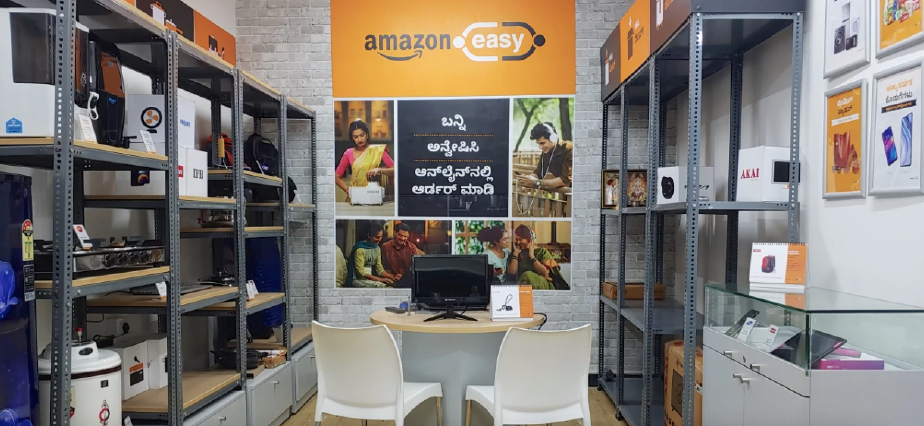 Amazon Easy Store
Amazon Easy Store Source: Company website [/caption] When leveraging store associates, retailers must ensure they deliver an exceptional experience and outstanding customer service, as it directly impacts store image. Retailers should provide associates with immersive and module-based training—for soft skills and upcoming in-store technologies—to improve the customer journey. Brands should also build a strong relationship with their associates, listening to their suggestions and implementing incentives. Satisfied associates are more likely to make additional efforts to improve sales and build relationships with customers, differentiating the in-store experience from online channels. Revolutionize Retail Spaces with Emerging Technology Retailers should invest in innovations that minimize physical interaction in brick-and-mortar store checkout, to make this process quicker and more seamless. One such technology is radio-frequency identification (RFID), which enables fast self-checkout through auto-scanning of the basket, eliminating the need to scan products individually and for bulky security tags.
- Walmart-owned fashion platform Myntra launched an RFID-enabled store for its lifestyle brand, Roadster Go, in Bengaluru in 2019. RFID-powered digital screens around the store also enable customers to access detailed product information instantly.
Figure 2. Flagship/Experiential Stores Recently Launched in India [caption id="attachment_148114" align="aligncenter" width="700"]
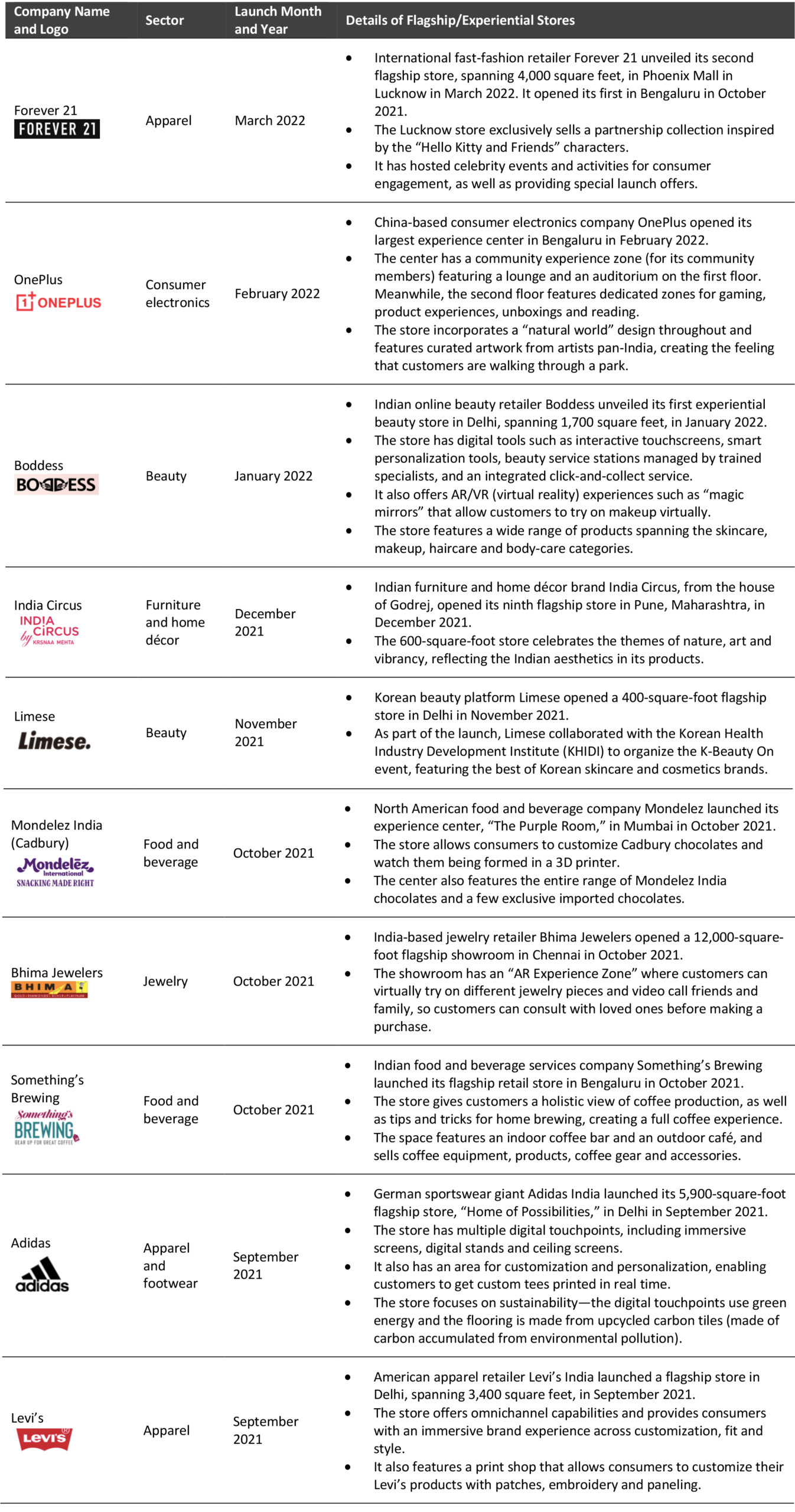 Source: Company reports/Indian Retailer[/caption]
As seen above, international brands and retailers are increasingly looking at experiential store formats when expanding their retail footprint. For instance, OnePlus has already launched over 30 experience stores in India, with plans to expand to over 100 across the country. With the government removing most pandemic restrictions and markets reopening, the time is right for international brands and retailers to expand their retail footprint in India.
Source: Company reports/Indian Retailer[/caption]
As seen above, international brands and retailers are increasingly looking at experiential store formats when expanding their retail footprint. For instance, OnePlus has already launched over 30 experience stores in India, with plans to expand to over 100 across the country. With the government removing most pandemic restrictions and markets reopening, the time is right for international brands and retailers to expand their retail footprint in India.
What We Think
With consumers returning to brick-and-mortar stores, we expect a proliferation of flagship stores and experience centers in 2022. We believe that online brands, including DTC and digitally-native brands, will take the experiential route to create an offline presence, attracting consumers and immersing them in their brand philosophy. Offline retail, powered by experiential retail, will gain traction and offer stiff competition to online counterparts. International retailers entering India’s markets can use experiential stores to immerse Indian consumers in their brand story, identity and product and service offerings. Meanwhile, we expect a surge in the growth and adoption of emerging technologies such as IoT (Internet of Things), AR and VR in India due to the launch of flagship and experiential stores. Finally, we feel that brands and retailers will leverage their flagship and experiential stores to strengthen their omnichannel initiatives to cater to growing consumer needs. Brands should look at Tier 2 markets and beyond for their experience centers and flagship stores, targeting predominantly online consumers with higher disposable incomes for discretionary spending. Implications for Brands/Retailers- Beauty brands and retailers should look at collaboration with international brands, celebrities, influencers and sectoral experts for their experiential stores, providing the best product offerings and advice.
- Experiential stores should leverage immersive technologies such as IoT, AR, VR and artificial intelligence (AI) to offer an immersive and engaging shopping experience to consumers, as well as earn a wealth of consumer data to provide personalized customer recommendations.
- Brands should train their store associates on brand values, in-store technologies and soft skills, with a focus on building relationships with customers.
- Retailers can organize in-store events, such as masterclasses, that offer stylings tips and tricks in their experiential stores to engage consumers.
- In addition to technologies and immersive experiences, brands and retailers can also offer value-added services such as cafés, lounges and gaming and entertainment zones in their experience centers.
- Brands and retailers can use their flagship and experiential stores to fulfill omnichannel capabilities such as buy-online-pickup-in-store and curbside pickup.
- Retailers that open multiple experiential stores can look at different themes, including regional themes that resonate with consumer tastes and preferences, to distinguish locations from one another.
- Companies can offer in-store AR and VR technologies to retailers for their flagship and experiential stores.
- Many retailers’ recent investments in deep technologies will provide opportunities and growth for technology-led companies offering IoT tags.
- Real estate firms can offer commercial spaces for rent or lease to brands and retailers launching their flagship and experiential stores.
- Real estate firms can also partner with brands and retailers to develop themes and interiors for their flagship stores, especially those that expand their store network to multiple cities.